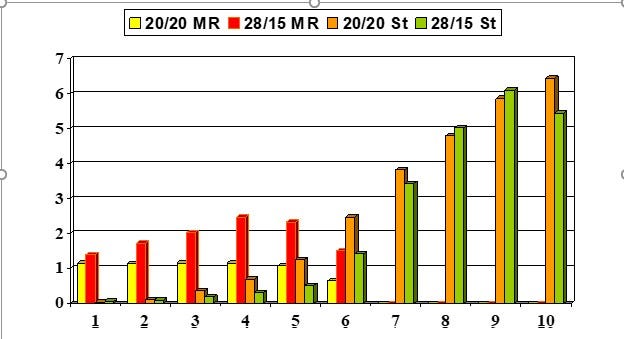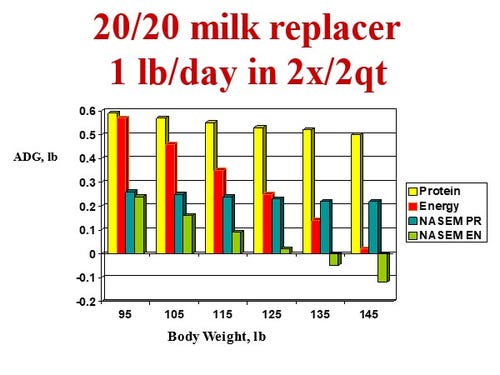A review of the new Dairy NASEM 2021
New NASME 2021 edition contains a revised and more accurate Young Calf Model, and new growth equations for heifers
December 6, 2022

By Al Kertz, PhD, DIPL ACAN, ANDHIL LLC
Unnoticed by me, as likely for most other people too, was a change in 2015 from NRC to NASEM which stands for National Academies of Sciences Engineering Medicine. Thus, the new Dairy NRC 2021 is actually the Dairy NASEM 2021. At the end of August and first day of September, the ADSA DISCOVER Conference was held in which the various committee members previewed what would be in the 2021 NASEM when available in December 2021. This article will highlight what is included under calves and heifers.
Jim Drackley of the University of Illinois was responsible for the calf section. The 2021 NRC was a big improvement in this area after the first version of the 2001 Young Calf Model. It allowed development of predictions based on calf and diet inputs for protein available daily gain and energy available gain. I used this model extensively to see and show how unbalanced some feeding programs were. Most notably that a 20% protein/20% fat milk replacer (20/20) limited protein available gain, and if more than a lb was fed daily there was too much energy and not enough protein. In a study at the University of Illinois with Jim, we illustrated how feeding more of a higher protein milk replacer (28/15) spurred growth and enabled calves to double their birth weight at the end of 2 months of life (Stamey et al, 2012; Figure).

Figure. Daily DMI versus weeks of age when calves were weaned at the end of 6 weeks of life after fed 1.25 lb daily of a 20/20 milk replacer (MR) or 2% of body weight of a 28/15 milk replacer.
After the 2001 NRC was published, studies done primarily at the University of Illinois, Cornell University, and Michigan State University found that the Young Calf Model was not as accurate as it could be because it had been based on larger fattening veal calves. The efficiency of converting metabolizable energy to retained energy was too high for younger calves depositing primarily protein. The key in revising the Young Calf Model was body composition data on younger calves. The Model continues to allow use of milk replacer alone or in combination with starter to evaluate daily gain. It also predicts starter intake. The model was tested on extensive data scoured from published studies. The table shows the metabolizable energy (ME) and crude protein (CP) needed for a range of daily gains (ADG), dry matter intake (DMI) and % protein in the DMI. Of course, these requirements are based on intake from both milk/milk replacer and starter.
In three comparisons with a range of calf body weights and milk replacers of the 2021 versus 2001 Young Calf Models, the new model predicted less daily gain by about 0.2 lb per day. Here are two graphs in which I used the 2001 Young Calf Model versus the 2021 model. Feeding the proverbial 1 lb daily of a traditional 20/20 milk replacer shows that with the newer 2021 model, predicted ADG 0.3lb less for protein across body weights; and about 0.2 to 0.3 lb less ADG for energy. I was told that there may be some “bugs’ in the NASEM program, so I downloaded the program available mid-March 2022.
Maintenance requirements is 0.16 x Metabolic BW. This is the same as for cows, and similar to the beef NASEM 2016 requirements. Heifers on pasture may have a higher requirement while those in confinement a lower maintenance requirement. The metabolizable protein (MP) for maintenance is the same as for cows. As for growth:
It is “frame” or “structural” growth and includes the normal gains in skeletal muscle, adipose tissue, bone, organs, intestinal tract, and gut contents as heifers maturing at moderate body condition
For heifers, no allowance is made for change in body reserves
In heifers, 2.2 lb of growth = 1.87 lb of Empty BW and 0.36 lb of gut contents
Net energy required for growth is defined as the energy retained in body tissues during growth and as a function of the proportion of retained fat and protein. Net protein is the retained protein
The above factors are reflected in the new growth equations. Older growth equations were based on beef data from as far back as 1980. I can relate to differences in growth and body composition between Angus and Holsteins and heifers versus steers and bulls because that was what my PhD thesis at Cornell was about (Fortin et al., 1980, 1981). These equations in the past have been based on limited Holstein heifer growth and body condition. Data are still limited but a Holstein heifer growth and body composition study by Matt Meyer for his PhD at Cornell with Mike Van Amburgh has been a key source of such data.
Optimal heifer rearing programs must consider not just growth, but possible effects on future milk production potential. Generally, growth between weaning and breeding in excess of 2.2 lb daily decreased first lactation milk yield. Yet, I see and hear where producers or growers delight in exceeding this 2.2 lb daily gain. Yes, it can occur in spurts or with individual heifers, but that does not mean it is okay for all heifers. New growth equations try to account for undue fattening.
Generally, BW gain and body score should be closely monitored in feeding programs to ensure optimal skeletal growth and to avoid undue fattening.
The Bottom Line
The new NASME 2021 edition contains a revised and more accurate Young Calf Model, and new growth equations for heifers. It is particularly important not to exceed 2.2 lb daily gain, especially after weaning to breeding, in order to not unduly fatten heifers.
References
Fortin, A., S. Simpfendorfer, J.T. Reid, H.J. Ayala, R. Anrique, and A.F. Kertz. 1980.
Effect of level of energy intake and influence of breed and sex on the chemical composition of cattle. J. Anim. Sci. 51:604-613.
Fortin, A., J.T. Reid, S. Simpfendorfer, H.J. Ayala, R. Anrique, A.F. Kertz, A.M. Maiga, D.W. Sim, and G.H. Wellington. 1981. Chemical composition and carcass specific gravity in cattle: effect of level of energy intake and influence of breed and sex. Can. J. Anim. Sci. 61:871-882.
NASEM 2021. Nutrient Requirements of Dairy Cattle 8th Edition
Stamey, J. A., N. A. Janovick, A. F. Kertz, and J. K. Drackley. 2012. Influence of starter protein content on growth of dairy calves in an enhanced early nutrition program. J. Dairy Sci. 95:3327-3336.
You May Also Like



